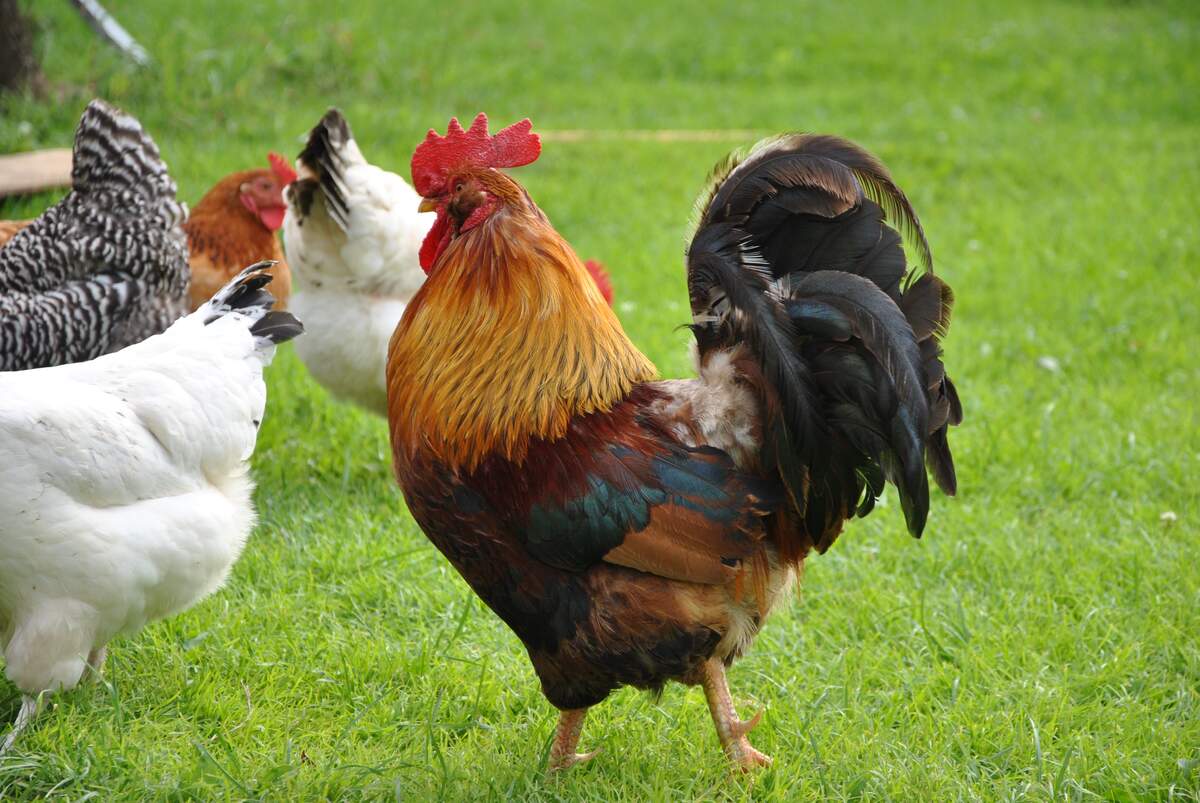

National Poultry Day
Observed
annually on March 19th
Dates
Tags
Agriculture
Food & Drink
Pets & Animals
Hashtags
Sources
https://en.wikipedia.org/wiki/Poultry
https://statesymbolsusa.org/symbol-official-item/national-us/state-holiday-event/american-holidays
https://www.census.gov/newsroom/stories/2018/poultry.html
https://www.holidayinsights.com/moreholidays/March/poultryday.htm
https://www.specialdaysofthemonth.com/national-poultry-day-march-19th/march/
Today we celebrate poultry: domesticated birds that are raised for their meat and eggs, and sometimes also for their feathers. Besides referring to the bird itself, the name may also refer specifically to the meat of the bird. Birds such as chickens, turkeys, ducks, and geese are considered to be poultry, while birds such as parrots and songbirds are not. Other birds considered poultry include quail, pheasants, and guineafowl. Birds that are hunted, known as game birds, are usually not included in the definition. The word "poultry" goes back to the Latin word pullus, which means "small animal."
The domestication of poultry began thousands of years ago, but it may not have originally been for food. For example, chickens may have first been kept for cockfighting, which was possibly the first spectator sport ever, starting in Persia around 6,000 years ago. Soon afterward, poultry began being domesticated for food. Poultry is now the second most eaten meat in the world. Approximately 30% of the world's meat production is poultry, while about 38% is pork. Poultry may be purchased fresh or frozen, cooked or raw, as a whole bird or in cuts, with or without the bone, and seasoned or plain. Most farmed birds are now raised in intensive commercial farming operations, as opposed to being extensively farmed. As time progressed, selective breeding practices took root, where birds were bred for certain attributes, such as being able to grow faster or lay more eggs.
More chickens are raised than any other type of poultry. Most of today's chickens are hybrids and are descended from Asia's wild red junglefowl, as well as from the grey junglefowl. They are omnivorous, eating both seeds and small animals, and usually do not fly. Domestication of chickens likely first began in China. They were in the Indus Valley by about 4,000 years ago and were in Egypt about 250 years afterward. They continued to spread around the world: it is believed that European explorers brought them to North America in the sixteenth century.
By about 1800, the domestication of chickens began expanding. Large poultry farms started in the United Kingdom in the 1920s and in the United States after World War II. Chicken consumption in the United States increased during World War II because there was a shortage of beef and pork. Around this time, chicken also became increasingly more important for its meat than for its eggs.
Today, selective breeding is often used with chickens. Some fast-growing birds, known as boiler chickens, are intensively raised for their meat, being grown to the size needed for consumption in about six weeks; some chickens are bred to lay eggs, laying about 300 a year; utility chickens are relatively useful for both consumption and egg production. Male chickens may be separated early for later eating, and sometimes are castrated at this time so they aren't as aggressive as they grow. In the United States, some chickens are raised free-range, meaning they are outside at least part of the day. But, on the other end of the spectrum, most are raised in battery cages, where they are cramped with a few other chickens in cages where they can barely move at all.
Ducks are another common type of poultry. They were first domesticated in the Far East, perhaps 4,000 years ago, at least 1,500 years earlier than they were domesticated in the West. Male ducks are called drakes and are often larger than females. They are omnivores that eat animal and plant materials. Most domestic ducks weigh too much to fly, and they are social and like to travel in large groups. The mallard is the ancestor of most duck breeds.
Ducks are farmed for their meat, eggs, and down, and are selectively bred just as chickens are. The Pekin duck is the most common in America; it can lay 200 eggs a year and grow to about 7.7 pounds in a month and a half. Chickens are more popular than ducks in the West, as they are easier to keep on large farms, can produce more meat, and are cheaper to raise. In contrast, ducks are more popular than chickens in the East. Two-thirds of the world's duck meat comes from China.
The greylag goose was domesticated in Egypt around 3,000 years ago. Today's Chinese goose descended from the swan goose, which was domesticated around 2,000 years ago in Siberia. A few modern breeds of geese came from the greylag and swan geese. Geese haven't become as commercially viable as chickens and ducks. Domestic geese are typically larger than wild geese, and they usually eat grasses and weeds. They also have good memories, and can roam about large distances, knowing that they should return home. Greylag and similar types of geese are usually used for their meat, while Chinese geese are usually smaller and are used for eggs. Geese are usually killed for their meat at the age of 10-24 weeks, and China is the largest producer of goose meat. The down of geese is also commonly used to make pillows and garments.
Domesticated turkeys are usually much larger than wild turkeys. There are many breeds, and most are white in color. They are descended from a subspecies of wild turkey that is currently found in Mexico. Turkeys were first domesticated in about 800 BCE in south-central Mexico, and the Pueblo Indians did the same in the Colorado Plateau in about 200 BCE. They were mainly domesticated for their feathers, which were used in robes, blankets, and ceremonies. They didn't become important for food until about 1,000 years later. Today they are often raised in large buildings. Female turkeys are killed for their meat after about 15 weeks, while males are killed after about 19 weeks. The eating of turkey has long been popular on Christmas and Thanksgiving, but it has been becoming more common for everyday consumption in recent years. Today we celebrate turkey, as well as chickens, ducks, and geese, and all other types of poultry.
How to Observe National Poultry Day
On National Poultry Day you could:
- Eat some poultry at a restaurant. Perhaps you could eat at one of the best fried chicken restaurants in America.
- Make a poultry recipe at home, such as chicken, duck, goose, or turkey.
- Make something with eggs.
- Start raising your own chickens or another type of poultry.
- Do the "Chicken Dance."
- Watch a documentary about factory farming. This particularly may be appealing if you are a vegetarian or are thinking about becoming a vegetarian and do not want to celebrate the day by eating poultry.





















